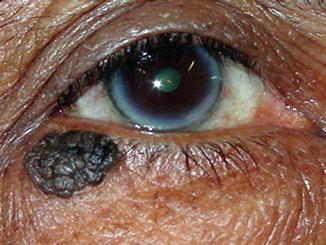(1)
Alo Eye Care, Kolkata, India
Keywords
Primary eyelid lesionsPapuleNoduleTumorPlaqueVesicleBullaePustuleCystComedonesSecondary eyelid lesionsTelangiectasiaScaleCrustLichenificationErosionUlcerationEschar2.1 Introduction
The aim of this chapter is to help the reader describe and identify the major types of skin lesions that may arise in the lid skin. Most lid tumors must be identified and described clinically before any intervention. In most cases, lid tumors present to a clinician after a certain period from onset of the disease, so there likely will be some skin changes over the lesions.
Examples of primary and secondary skin lesions are defined and illustrated in the next section. The differences between primary and secondary lid skin lesions are not always clear. Sometimes, a primary lesion in one disease may be a secondary lesion in another. Please note that this chapter defines and discusses the types of skin lesions and not the diseases. It focuses on clinical findings or observations; a wide variety of disease pathologies may be associated with any of these lesions.
2.2 Primary Types of Eyelid Lesions
Primary lesions are physical changes in the skin over the lids and periorbital region that are caused directly by the disease process. These lesions rarely are specific to a single disease entity.
2.2.1 Macule
A macule is a change in the color of the skin. It is flat, so if the examiner closes his or her eyes and runs fingers over the surface of a purely macular lesion, he or she will not be able to detect it. A macule greater than 1 cm may be referred to as a patch.
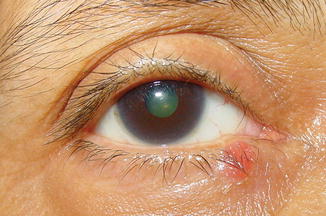

Fig. 2.1
Macule
2.2.2 Papule
A papule is a solid, slightly raised lesion that has a distinct border and is less than 1 cm in diameter. Papules may have a variety of shapes, including dome shaped, flat-topped sessile, pedunculated, filiform, and umbilicated, and may be associated with secondary features such as crusts or scales.
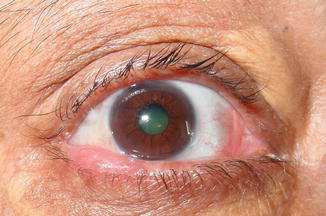

Fig. 2.2
Papule
2.2.3 Nodule
A nodule is an elevated, solid lesion larger than 1 cm. It may be at the level of the epidermis, dermis, subcutaneous tissue, or myocutaneous junction in the lid and periorbital zone.
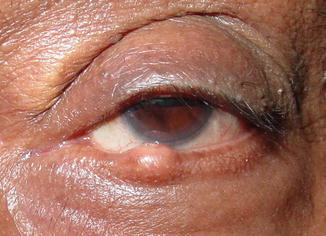

Fig. 2.3
Nodule
2.2.4 Tumor
A tumor is a solid mass of skin or subcutaneous tissue; it is larger than a nodule.
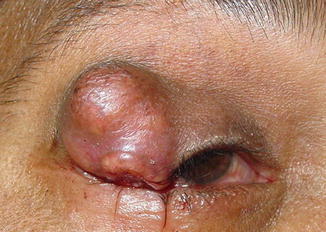

Fig. 2.4
Tumor
2.2.5 Plaque
A plaque is a solid, raised, flat-topped lesion greater than 1 cm in diameter. It is analogous to a geologic formation: the plateau.

